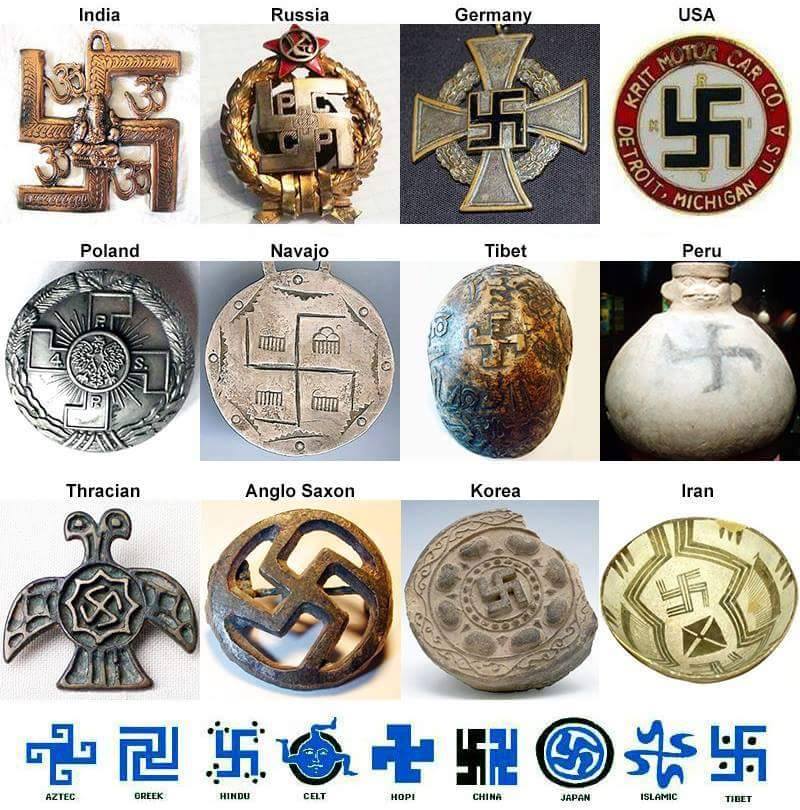The swastika, a symbol that is now often associated with the atrocities committed by Adolf Hitler and the Nazi regime, has a far more ancient and diverse history. Before its appropriation by one of the most hated men in history, the swastika was revered by numerous cultures across the world for over 12,000 years. This article explores the origins, meanings, and widespread use of the swastika throughout history.
Ancient Origins and Global Significance

The swastika has been an important symbol for thousands of years, particularly in Hindu and Buddhist cultures in India and other Asian countries. Even today, the symbol is prominently displayed on temples, buses, taxis, and book covers. Its history, however, extends far beyond Asia.
The swastika was used in Ancient Greece and can be found in the ancient city of Troy, which existed around 4,000 years ago. The symbol also appeared in the artifacts of the ancient Druids and Celts, and was used by Nordic tribes. Early Christians, including the Teutonic Knights, a German medieval military order that later became a purely religious Catholic order, also incorporated the swastika into their symbols.
The Meaning Behind the Symbol

The word “swastika” is derived from the Sanskrit word “svastika,” which means “it is,” “well-being,” “good existence,” and “good luck.” This symbol is known by different names around the world, such as “wan” in China, “manji” in Japan, “fylfot” in England, “Hakenkreuz” in Germany, and “tetraskelion” or “tetragammadion” in Greece.
The earliest swastika ever found was uncovered in Mezine, Ukraine, carved on an ivory figurine dating back an astonishing 12,000 years. One of the earliest cultures known to have used the swastika was the Neolithic Vinca Culture in Southern Europe, in the area that is now Serbia, Croatia, Bosnia, and Herzegovina, which dates back around 8,000 years.
In Buddhism, the swastika is a symbol of good fortune, prosperity, abundance, and eternity, directly related to Buddha. It is often found carved on statues, on the soles of Buddha’s feet, and on his heart, symbolizing Buddha’s mind.
Swastika in Christianity and Other Cultures

In the Christian catacombs of Rome, the swastika appears alongside the words “zotiko zotiko,” meaning “life of life.” It is also present in the window openings of the Lalibela Rock churches in Ethiopia and various other churches around the world. In Nordic myths, Odin is depicted passing through space as a whirling disk or swastika, looking down through all worlds. In North America, the swastika was used by the Navajo people.
Ancient Greek and Phoenician Uses
In Ancient Greece, Pythagoras used the swastika, known as “tetraktys,” as a symbol linking heaven and Earth, with the right arm pointing to heaven and the left arm pointing to Earth. The Phoenicians used the swastika as a sun symbol, seen on the Phoenician Craig-Narget stone in Scotland and the robes of Phoenician high priestesses.
Conclusion
The swastika is a powerful symbol with a rich history spanning over 12,000 years and across numerous cultures and continents. It is ironic and unfortunate that a symbol once representing life, good fortune, and eternity has been marred by its association with hatred and destruction. Understanding the swastika’s ancient and diverse significance can help reclaim its positive meanings and acknowledge its rightful place in the history of human civilization.
